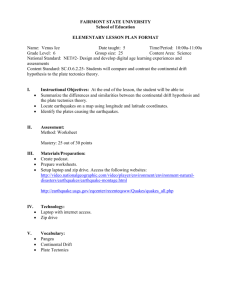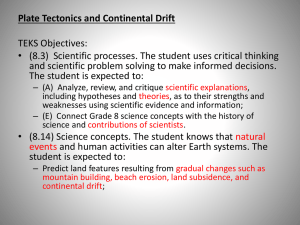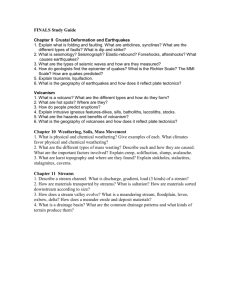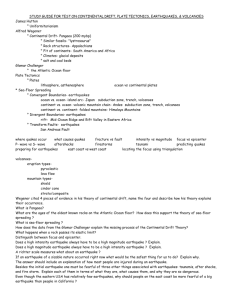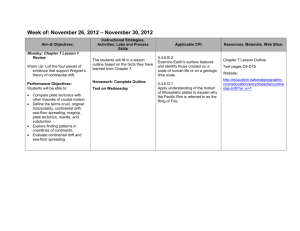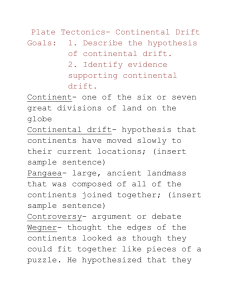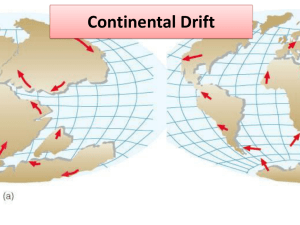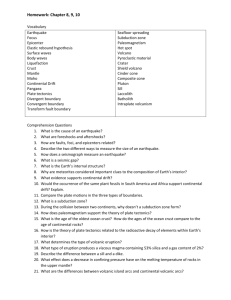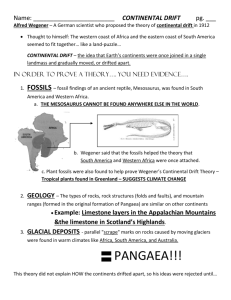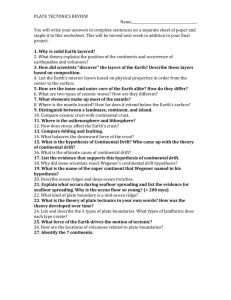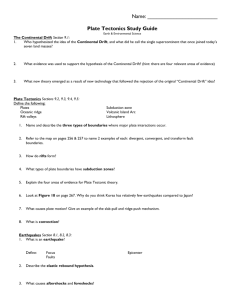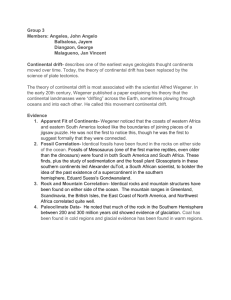test review
advertisement
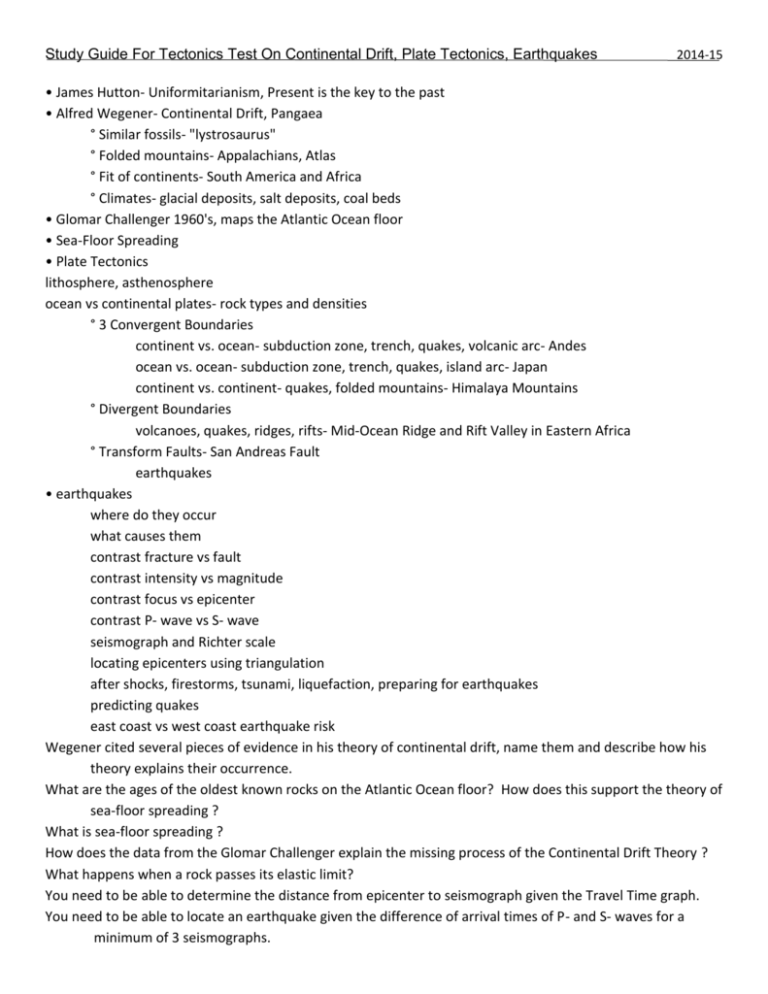
Study Guide For Tectonics Test On Continental Drift, Plate Tectonics, Earthquakes 2014-15 • James Hutton- Uniformitarianism, Present is the key to the past • Alfred Wegener- Continental Drift, Pangaea ° Similar fossils- "lystrosaurus" ° Folded mountains- Appalachians, Atlas ° Fit of continents- South America and Africa ° Climates- glacial deposits, salt deposits, coal beds • Glomar Challenger 1960's, maps the Atlantic Ocean floor • Sea-Floor Spreading • Plate Tectonics lithosphere, asthenosphere ocean vs continental plates- rock types and densities ° 3 Convergent Boundaries continent vs. ocean- subduction zone, trench, quakes, volcanic arc- Andes ocean vs. ocean- subduction zone, trench, quakes, island arc- Japan continent vs. continent- quakes, folded mountains- Himalaya Mountains ° Divergent Boundaries volcanoes, quakes, ridges, rifts- Mid-Ocean Ridge and Rift Valley in Eastern Africa ° Transform Faults- San Andreas Fault earthquakes • earthquakes where do they occur what causes them contrast fracture vs fault contrast intensity vs magnitude contrast focus vs epicenter contrast P- wave vs S- wave seismograph and Richter scale locating epicenters using triangulation after shocks, firestorms, tsunami, liquefaction, preparing for earthquakes predicting quakes east coast vs west coast earthquake risk Wegener cited several pieces of evidence in his theory of continental drift, name them and describe how his theory explains their occurrence. What are the ages of the oldest known rocks on the Atlantic Ocean floor? How does this support the theory of sea-floor spreading ? What is sea-floor spreading ? How does the data from the Glomar Challenger explain the missing process of the Continental Drift Theory ? What happens when a rock passes its elastic limit? You need to be able to determine the distance from epicenter to seismograph given the Travel Time graph. You need to be able to locate an earthquake given the difference of arrival times of P- and S- waves for a minimum of 3 seismographs.
